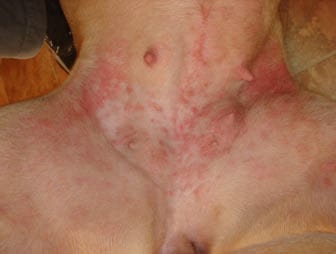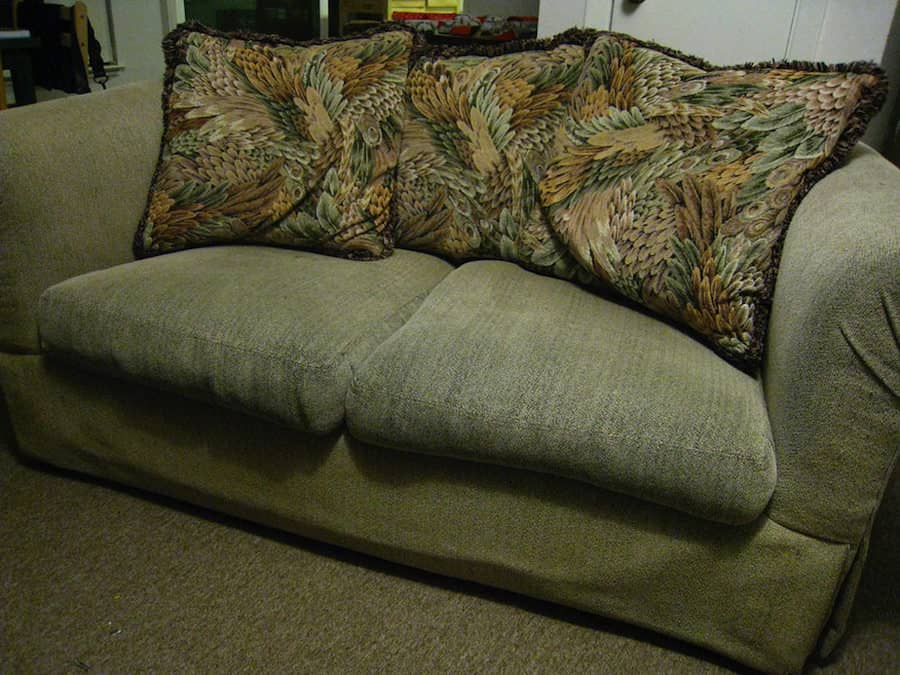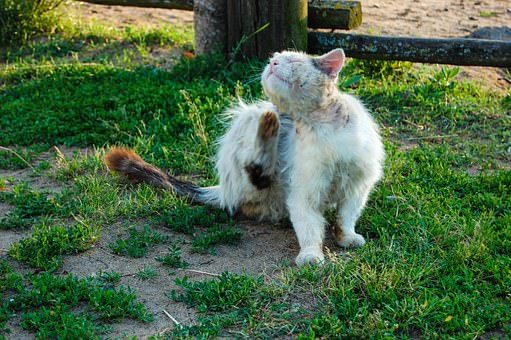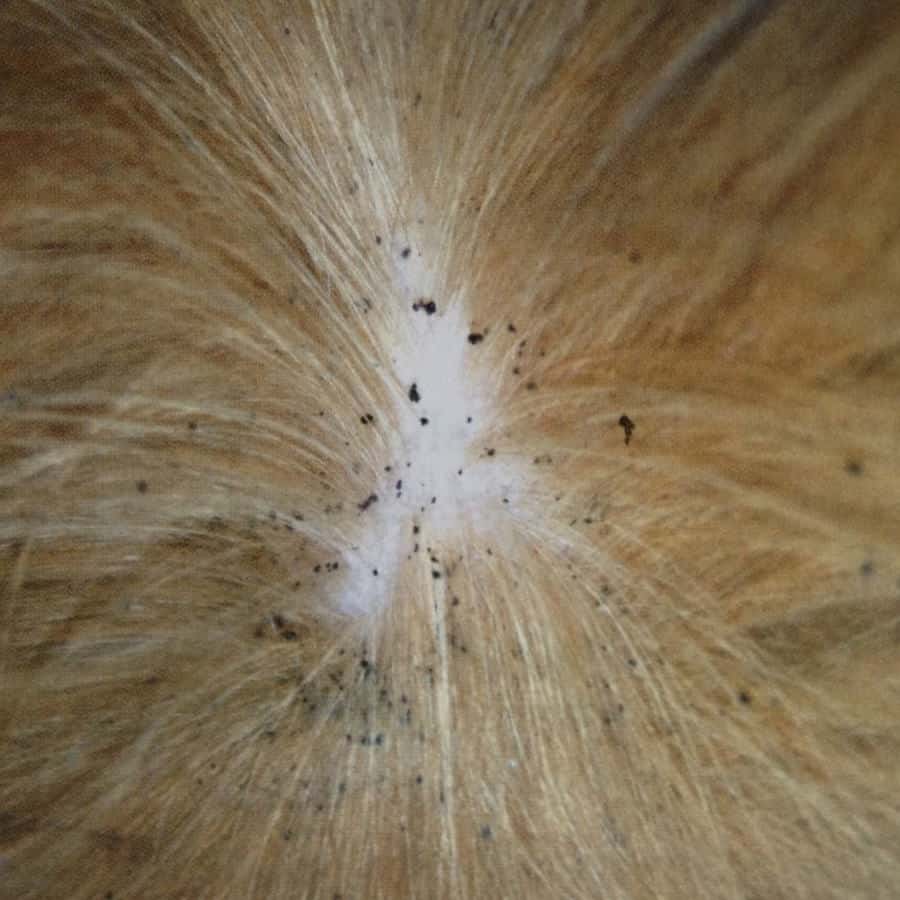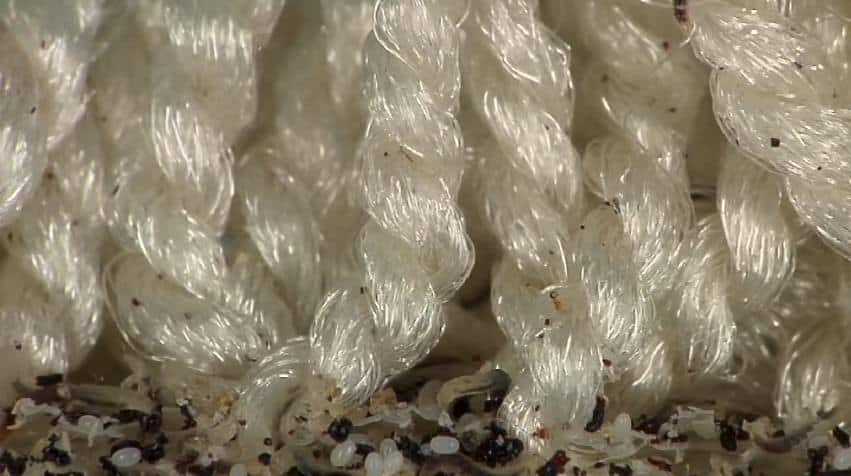Can Fleas Live On Humans?
We may not have as much hair on our bodies as our furry felines or shaggy dogs, but does that mean that those pesky fleas have no interest in us humans? Or do they fancy taking a bite out of anyone? Let’s take a look at how likely it is to find fleas on humans and what can be done about it.
How Many Different Kinds of Fleas Are There?
There are over 2000 different species of flea in the world. While most of the more common flea species look very similar to one-another, we have a few major categories.
The common types of fleas are:
Cat Fleas
Cat fleas, also known as ctenocephalises felis, predominantly live on the fur of cats. However, they can also be found on dogs, other animals, and humans. They prefer warm and temperate conditions.
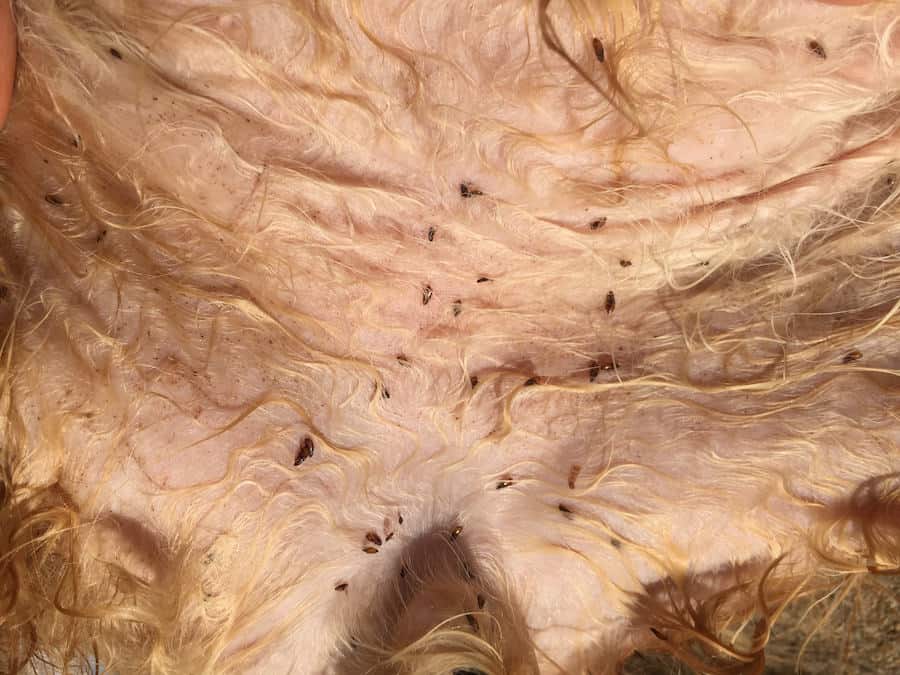
Dog Fleas
Dog fleas can also be called ctenocephalides canis, and as the name would suggest they are very similar to cat fleas. While they prefer to live on and feed off dogs, they can also be found on cats, other animals, and even humans.
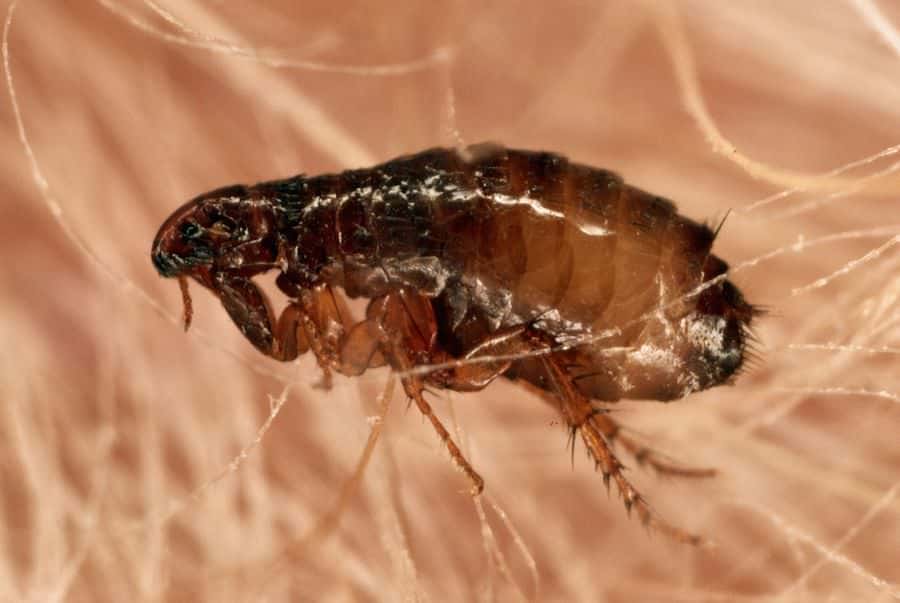
Human Fleas
Human fleas, or pulex irritans, are most often found on animals like coyotes, foxes and skunks. This species of flea has a similar length life cycle to that of dog and cat fleas, and they are also able to lay up to 400 eggs in ideal conditions. It is possible to prevent human fleas from living on your body by following thorough hygiene habits.
Sticktight Fleas
Sticktight fleas, or echidnophaga gallinacean, can be found on a wide variety of animals, from chickens and birds, to cats, dogs, horses, rabbits, rodents and humans. This type of flea is known for burying its head deep into the flesh of an animal, and sucking blood for extended periods while in this position. This is the reason why they are named ‘Sticktight’.
Rat Fleas
There are two varieties of rat flea: the Northern rat flea (nosopsyllus fasciatus), which is found in Europe and North America, and the Oriental rat flea (xenopsylla cheopis), which is found throughout Asia. While both of these species of flea are not as common as dog or cat fleas, they were responsible for spreading the bacteria which caused the infamous Black Plague of the 14th century, killing almost one-quarter of the population of Europe at that time.
Sand Fleas
Sand fleas are anatomically different to other kinds of fleas, as they are in fact parasitic crustaceans which live in the sand near water. However, they do not only attack water creatures; they also feed off animals found on land and they are capable of living away from their primary habitat.
Springtail Fleas
Springtail fleas are also known as snow fleas. They like damp habitats or damp areas on the body of a host. This breed of flea is capable of traveling over 100 times the length of its own body, or over a distance of around four feet.
Chicken Fleas
Chicken fleas, also known as ceratophyllus gallinae, are similar to sticktight fleas as they like to live on birds and poultry. They are a huge pest in North America and Europe. Large infestations of this breed in chicken cages or poultry shelters can cause a reduction in the production of eggs.
Will Fleas Choose to Bite Humans?
As you can see, there are copious breeds of flea, many of which can come into contact with humans. Although most kinds prefer a furry or feathered host, they will not object to a human blood meal, should the opportunity present itself.
Fleas are blood-sucking little creatures, who need to ingest the warm blood of a mammal in order to nourish themselves and survive. Therefore, humans fit the bill rather well, when their preferred host is absent. The most common types of fleas that are likely to bite humans are, unsurprisingly, dog fleas, cat fleas and of course human fleas.
Can Fleas Live on Human Blood?
Many species of flea can live for months at a time on a diet of human blood. However, cat and dog fleas are unable to breed without living and feeding off their preferred host.
Fleas may enter your home on an animal host’s body, such as your pet dog or cat, and you may not even notice them until your animal is away from the house. At this point, the fleas which may already be camped out in your pet’s bedding, or other upholstered areas of your house, will emerge in order to search for a new host. You may be the only suitable warm-blooded creature around.
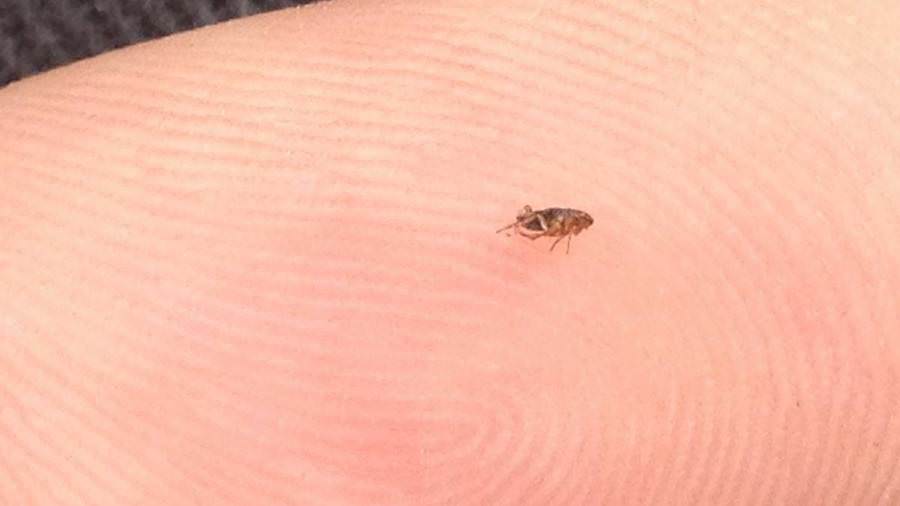
Can You Get Fleas Even If Your Pets Don’t Have Them?
Although it is not completely impossible for you to get fleas if your pets don’t have them, it is highly unlikely that you will. Most cases of human fleas are a direct consequence of pets carrying fleas and bringing them into your home. Thus resulting in closer contact with you and your family and increasing the potential for them to adopt you as a host body. It is still feasible though, for you to pick up fleas from being near a flea-infested animal or in a flea-infested environment.
You may be tempted to use a flea prevention treatment which is produced for animal use. Let me assure you though, that this is definitely not the way to go! As long as you maintain good personal hygiene habits, such as showering and washing your hair regularly, as well as removing excess body hair where they might like to live, you should manage to avoid a personal flea infestation and remain itch-free.
How Do You Know If You Have Fleas?
While you may think that you would notice flea bites fairly quickly, there are a number of different symptoms that may be present if you have fleas on your body.
Itching is caused by a reaction to the saliva of the flea, which is released into your skin when it bites you. Swelling and redness around the bite area is often apparent. However, these itchy spots can develop into small wounds if your skin is broken open, due to excessive scratching. Rashes are also common.
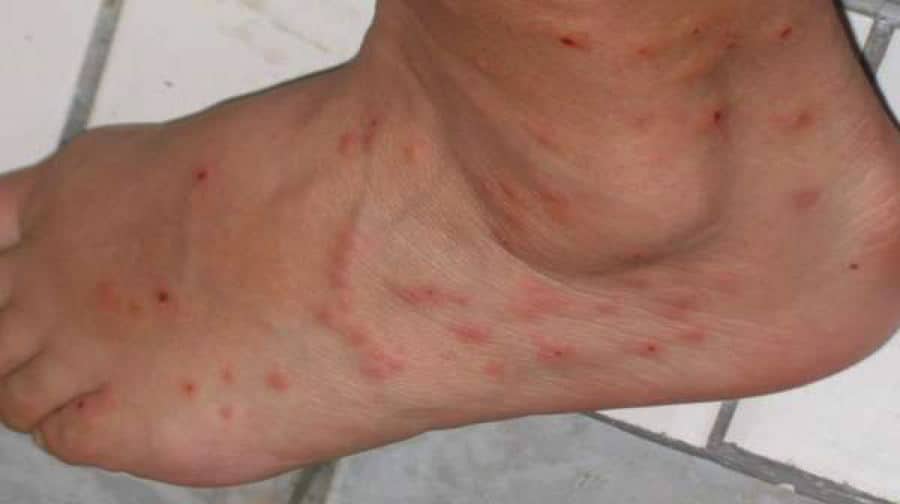
You may notice more bites and itchiness on your lower legs and feet. Unlike mosquitoes which can fly, fleas are only able to hop and jump, meaning they can generally only access lower areas of your body.
Flea bites can make your skin feel sore and extremely sensitive to touch, especially after excessive scratching. You may even experience a secondary infection from scratching your bites and exposing the open wounds to external conditions.
While fleas absolutely love residing within animal fur, they aren’t so keen on human hair, and don’t feel obliged to spend too much time hiding on your head.
How to Treat Bites From Fleas
Flea bites are irritating and sometimes painful, still, they can be treated in a number of ways.
Substances such as hydrocortisone steroid cream or calamine lotion can help to speed up the healing process and reduce the level of itching felt. Many essential oils are also useful; these include lavender oil which is both anti-inflammatory and antiseptic, and peppermint oil which helps lessen itchiness and soothes the affected areas.
Aloe vera can be applied, typically, either directly from the plant or by using a cream containing it. Aloe vera soothes bites and can aid in the prevention of both scarring and secondary infections.
Alternating hot and cold compresses can also help to heal your skin by speeding up the body’s natural healing process. Lastly, exfoliating and moisturizing your skin helps to keep it in good condition and recover quickly from flea bites.
How to Get Rid of Fleas on Humans
Chemical Remedies
Many shampoo products that are formulated to treat head lice, also work very effectively on fleas. Ensure that you follow all of the instructions in regard to combing techniques and repeated applications. Tea tree shampoo can work at repelling fleas, even if not specifically intended for the treatment of them.
Also. there are numerous chemically based treatments which can help to remove fleas from your home. These include flea sprays and flea bombs.
Finally, as most cases of fleas on humans are caused by fleas already on pets, it is vitally important to ensure that your pets are treated for any fleas that they may be carrying. Treating your pets will aid in preventing further infestations, improving their health and comfort, and reducing the likelihood of fleas trying to live on your body or a body of a family member.
Natural Remedies
Although many of the natural solutions to fleas on humans may seem like rather far-fetched old wives’ tales, there is still some merit in them and they are a much safer alternative to chemical treatments.
It is possible to trap fleas in a solution of dish soap and water. Just make sure that you place it in an area of your home that is near a concentration of fleas to achieve a desired effect. This liquid solution is adhesive, and once fleas are in it they are unable to free themselves. It is best to use this treatment at night time with a fresh mixture each time; however, it may not be a practical solution if you have inquisitive pets or small children!
Additionally, there are other ways to create an effective homemade flea trap.
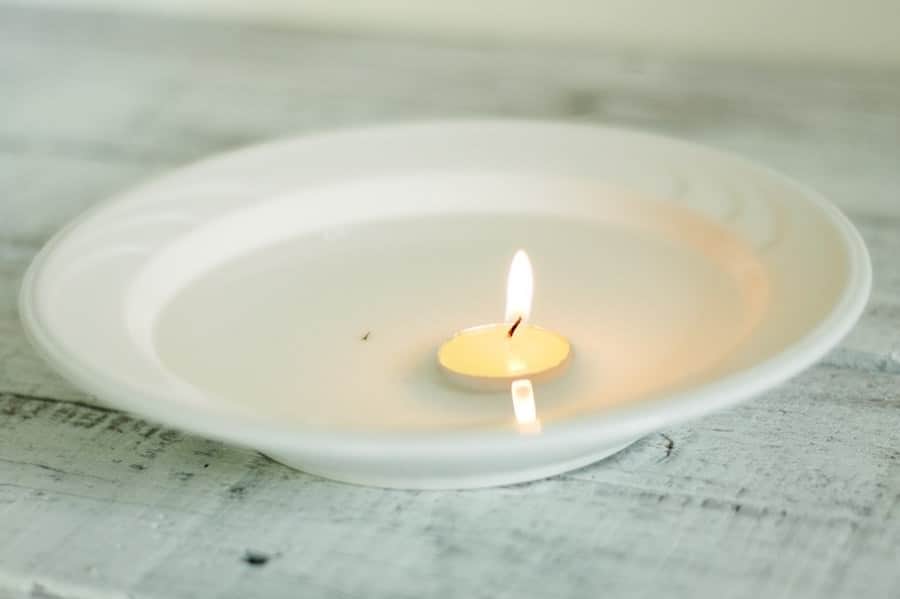
There are some easily obtainable substances which can be applied to areas where fleas may be living. These can be rubbed in and left to impregnate the fabric or carpet, before being vacuumed up along with the fleas that are killed off in the process. These substances include baking soda, salt, and food-grade diatomaceous earth. They work by dehydrating any organisms that they come into contact with.
Vacuuming in itself is one of the best things you can do to eradicate fleas from your surroundings and help to prevent them from living on your body. Repeatedly vacuuming, whether done alone or in conjunction with another treatment, is an effective way of removing fleas from your furnishings as it picks up both the fleas and larvae, as well as potential food sources.
How to Prevent Fleas From Entering Your Home
There are numerous ways in which you can prevent fleas from entering your home, and many of these can be performed inexpensively and naturally without the use of harsh chemicals.
There are a number of essential oils which have insect-repelling properties; these include lavender and citronella oils. An added bonus to using these oils is that they soothe the skin and have healing properties which benefit both the hair and skin.
Two plants which can be added to your garden or grown inside your home are eucalyptus and pennyroyal. Both of these have strong and effective insect-repelling abilities and the leaves can be used to help treat any existing infestations. You may also wish to leave wood chips made from cedar wood at various places in your home, such as under your pet’s bedding, in the corner of a room or under an item of furniture.
Borax soap is another useful flea repelling substance, and this can be sprinkled in areas where fleas may enter your house. Another solution is to make a lemon spray with fresh lemon pieces and boiling water, which once cooled you can spray on your cat or dog and rub into their coat and skin.
Summary
Not content with living on and irritating our precious pets, it turns out that numerous kinds of fleas also like to feed off humans. Although these creatures do not often cause dangerous or life-threatening issues, they are well up there when it comes to annoying insects and very itchy bites!
The good news is that even though fleas are attracted to us and every other warm-blooded creature, fleas on humans are easily preventable and there are numerous ways in which we can deter them, exterminate them and treat any problems that they can cause us.

